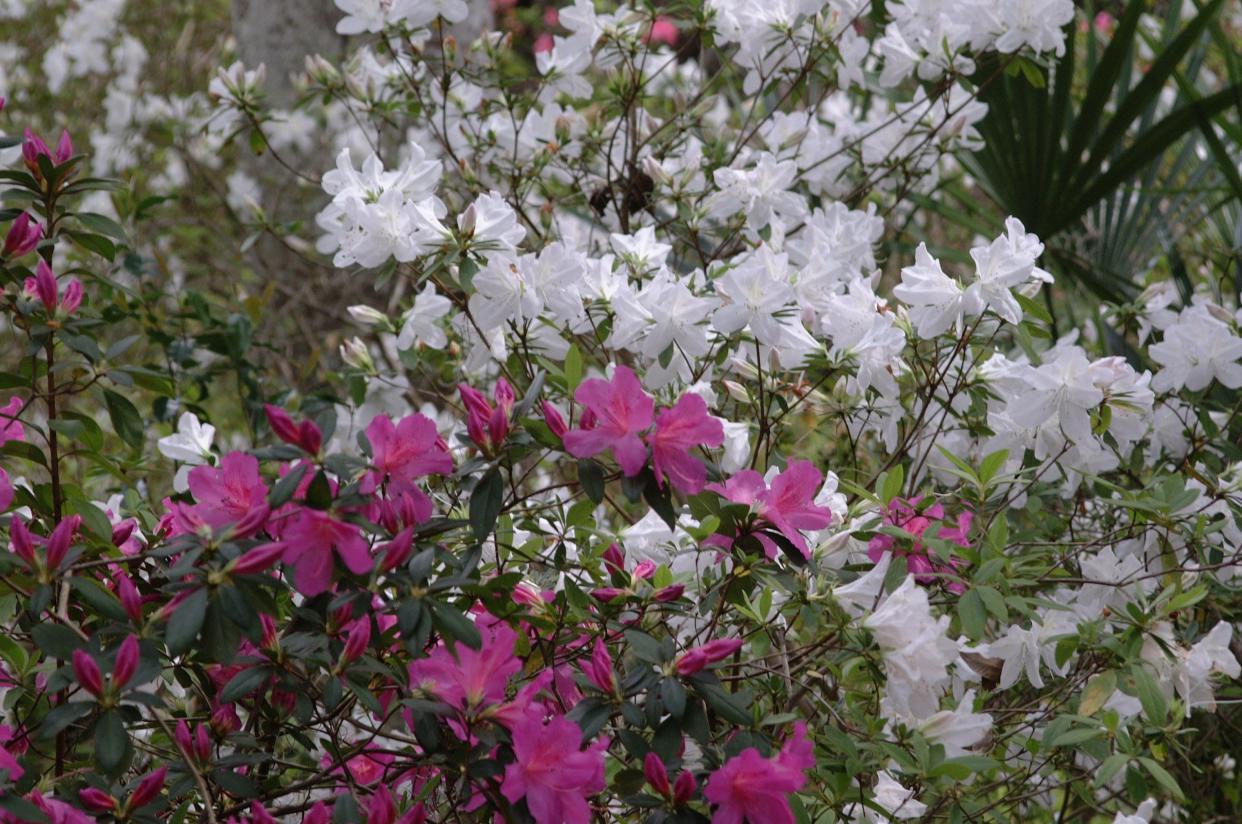Wondering what you should be doing in your garden in May? Here are a few tips.

May is a great month in Florida as the mornings are still cooler, the days are warm, and we are often still a bit away from the real heat of the summer. Take this opportunity to enjoy your garden, wrap up on spring landscape chores, and prepare for the coming months.
Pruning azaleas
Once the flowers are gone, it is time to prune your azaleas for the year. Make cuts to improve the structure and size of the shrubs and like most species, frequent hedging will leave you with a less dense plant with very few blooms. Azaleas bloom on older growth so do not prune after July 4th so you get a good display in the fall or spring.
Also, don’t forget that aside from our common azaleas we do have native varieties in our area. Look for ‘Pinxter’ and ‘Florida Flame’, these are unique because they actually bloom before the leaves emerge.
Scouting for pests
As temperatures increase, so does insect activity. Take time at least once a week to walk around your garden and look closely for insect pests and damage on your plants. Some key pests to look for on plants are:
Turfgrass: If you have dying spots in your St. Augustine grass, look closely at the base of the turf for chinch bugs. These are very small and easy to miss. One way to check is to take a round container open on both ends, press down into your turf part of the way, and fill with soapy water. The chinch bugs will usually float to the top. This can also be accomplished by drenching an area of the turf with some soapy water and look for them before the water drains down. If present and damaging, check out your control options online at https://edis.ifas.ufl.edu/lh036 or contact your local UF/IFAS Extension office for advice.
Oleanders: This is the time for oleander caterpillars to emerge and do their damage. Look for the chewing on the leaves of your plants and the many larvae that are usually present. Consider using a product containing Bt labeled for ornamental plants for control. Bt-containing products use a bacteria, Bacillus thuiengiensis, to control larval pests and should not affect other insect groups. As with any pesticide, be sure to read the product label and follow all directions and precautions.
All ornamental plants: Thrips, scales, and mites are usually growing in numbers so keep an eye out for their damage. Also, you may be seeing a lot of lubber grasshoppers around. These large pests should be crushed on site.
Preparing for hurricane season
June is the start of the Atlantic hurricane season, making May a great time to get ready. Have dead or other hazard trees removed, do some pruning, and clean up any garden debris or materials that could become airborne during a storm. For big pruning jobs, proper cuts and tree management are key, so look into hiring an ISA-certified arborist. A comprehensive listing of these individuals working in our area can be found at www.treesaregood.org/findanarborist.
If doing the pruning yourself, be sure to not do the common “hurricane cut” on palms. This can increase the chance of damage, pests and disease. With palms, never prune green fronds and, if healthy, they should not pose a threat during storms.
Things to plant in May
Vegetables: Southern Peas, Swiss Chard, Okra, Ginger, Roselle, Amaranth, Boniato, Calabaza, Long Squashes, Luffa, Pigeon Pea, Seminole Pumpkin, and Sweet Potatoes.
Annuals: Calliopsis, Celosia, Coleus, Crossandra, Exacum, Gaillardia, Gazania, Hollyhock, Impatiens, Kalanchoe, Marigold, Nicotiana, Ornamental Pepper, Pentas, Periwinkle, Portulaca, Salvia, Thunbergia, Torenia, Verbena, and Zinnia.
Bulbs, Tubers or Rhizomes: Alstroemeria, Aztec lily, Begonia, Blood lily, Caladium, Kaffir lily, Walking Iris, African lily, Spider lily, and Tiger Flower.
Wayne Hobbs is an extension agent in environmental horticulture for Clay County.
This article originally appeared on Florida Times-Union: May gardening tips: Prune azaleas, things to plant in your garden

